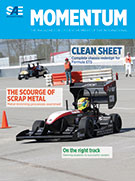Technical Paper
Wireless Charging for EV/HEV with Prescriptive Analytics, Machine Learning, Cybersecurity and Blockchain Technology: Ongoing and Future Trends
2019-04-02
2019-01-0790
Due to the rapid development in the technological aspect of the autonomous vehicle (AV), there is a compelling need for research in the field vehicle efficiency and emission reduction without affecting the performance, safety and reliability of the vehicle. Electric vehicle (EV) with rechargeable battery has been proved to be a practical solution for the above problem. In order to utilize the maximum capacity of the battery, a proper power management and control mechanism need to be developed such that it does not affect the performance, reliability and safety of vehicle. Different optimization techniques along with deterministic dynamic programming (DDP) approach are used for the power distribution and management control. The battery-operated electric vehicle can be recharged either by plug-in a wired connection or by the inductive mean (i.e. wirelessly) with the help of the electromagnetic field energy.










